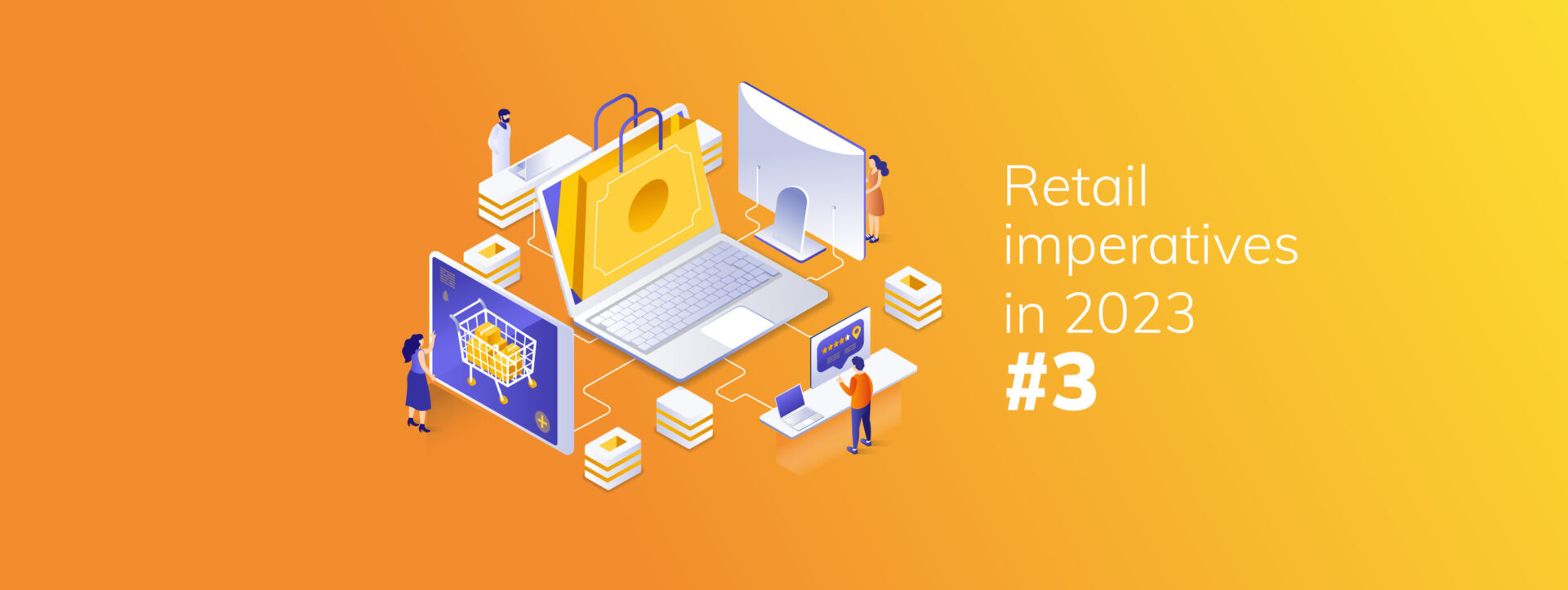
Where Has My Margin Gone? From Cost Chaos to Confident Planning
Retailers are losing profit despite growing sales. Discover how Retail Margin Orchestration with AI helps…

What are the key imperatives for retail leaders in 2023? Find out in this blog series! Each week, we’ll explore a new topic that should be top-of-mind for retailers.
The third step to intelligent planning in 2023 is continuous alignment. Continuous alignment means breaking down planning silos to continually align metrics and decisions to customer, market, and growth plans.
Planning must happen in real-time to support decision-makers with the latest insights to drive superior outcomes, especially for unified merchandising and supply decisions. Put simply, it is a key capability for transforming your planning.
Data silos are a significant problem in retail. Shaped by legacy tech and processes, it is now one of the biggest barriers to profitability and resilience. Retail generates a staggering amount of data, with IDC estimating it to grow 26% CAGR from 2021 to 2026. The problem is not going away.
Data is also ramping up complexity, with new retail cloud capabilities producing even more insights that do not sit well with existing legacy merchandising and supply chain systems. Retailers increasingly face data ‘chaos’ where they cannot consolidate data from multiple systems and align it to a plan.
With continuous alignment, three perspectives are driving value:
While most retailers measure their business through standard KPIs, they are typically not optimized end-to-end to manage competing business goals – especially in rules-based or exceptions-based planning processes. For example, space optimization vs. inventory levels.
For retail planners, not all decisions are equal. Prioritization is essential today. Leveraging a more holistic planning data set provides the additional intelligence required to understand the root cause and the next best action aligned to a common view of business plans and goals.
The merchandising life cycle is a great example of where continuous alignment can create more value. For example, assortment plans can unify discrete planning cycles, such as pre-season with in-season plans to drive customer-aligned allocation and replenishment.
However, the value of continuous alignment does not stop here. Elevated levels of cross-functional collaboration can be achieved with continuous alignment, synchronizing decisions through unified insights, analytics, and AI (Artificial Intelligence) to drive consensus-based planning. Consensus-based planning represents an opportunity for retailers to break out of high-touch, exception-driven routines and work on more value-add planning activities internally and with trading partners.
AI is becoming prevalent in retail, especially in merchandising and supply chain processes. However, AI deployments are typically constrained to narrow lanes of optimization. High-value AI use cases such as promotions, markdown, and forecasting can too often remain stuck in data science mode. A recent study by RSR highlighted that one of the biggest barriers to AI adoption is dashboards, where machine learning output sits outside of existing decision frameworks. If you are deploying or considering investing in it, continual alignment is a huge opportunity to scale the advantages of AI.
Unifying retail planning is becoming more difficult by the day. However, continual alignment is an essential planning capability that can drive profitable growth for most retailers. Strong leadership, clear prioritization, and new planning capabilities and skills are needed to optimize for the new economics of retail.
Enabling these requirements and continuous alignment is possible through Intelligent Planning. Intelligent transformation is the adoption of an automated, fact-based approach to planning. It includes state-of-the-art planning tools that solve traditional retail merchandising and supply chain challenges with data, automation, and collaboration. It also adds more intelligent ways of working to drive a positive impact on leadership, functional skills, and business partnering.
Through these new digital ways of working, intelligent transformation extends beyond traditional planning technologies, redefining how stakeholders collaborate, the organization’s approach to decision-making, and how management processes are conducted towards the enterprise.
Check out the other blogs in this series:
Discover three steps to help retailers plan for and achieve better profitability with Intelligent Planning